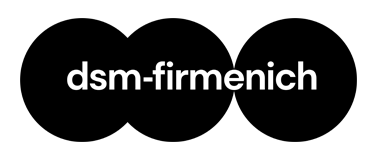dsm-firmenich posts strong H1 2025 results as Fragrance stays resilient
Perfumery drives growth amid beauty headwinds, as the scent powerhouse doubles down on innovation and integration.
If you’re a fragrance lover, chances are you’ve already experienced the work of dsm-firmenich, even if you didn’t realise it. As a global ingredients giant the organisation plays an integral role in shaping how the world smells and is behind countless perfumes from both niche and designer houses.
Based on its latest half-year results, the company is making strategic moves that could shape the future of scent creation for years to come.
A good Half-Year, with fragrance holding firm
In its half-year update released on 31 July, dsm-firmenich reported a 7% rise in sales and a 29% increase in earnings. It’s a strong result that suggests the merger between DSM and Firmenich is starting to pay off.
DSM and Firmenich merged in 2023, bringing together Netherland’s based DSM’s capabilities in bioscience, nutrition and health with Swiss fragrance and flavour house Firmenich creating dsm-firmenich.
Within its Perfumery & Beauty division, growth in perfumery helped offset a weaker performance in the broader beauty segment, particularly in sun care. Fragrance, it seems, continues to perform reliably even in a complex and competitive market.
Earnings in the Perfumery & Beauty (P&B) division dipped slightly (down 4% from last year), but profit margins stayed strong at 22%. This suggests that despite some cost pressures, fragrance remains one of the most valuable parts of the business.
For fragrance consumers and industry insiders, the results offer reassurance: one of the most influential players in global scent development is maintaining its position and continuing to invest in future growth and innovation.
Innovation, synergies, and scent science
dsm-firmenich says it’s putting more focus (and funding) into innovation, particularly in areas like scent creation, sustainable ingredients, and new tech like AI. The company expects to save and earn around €350 million through the 2023 merger, with half coming from cost cutting and the rest from new business opportunities.
For perfumers, that could mean faster access to new materials. For brands, it’s more collaborative formulation options. And for fragrance fans? Potentially more perfumes that balance creativity, sustainability, and commercial viability.
Fragrance in a shifting beauty market
While the broader Beauty category within the P&B segment experienced pressure from weaker sun filter sales, the strength of perfumery within the portfolio shows that fragrance continues to punch above its weight in beauty’s hierarchy.
It’s no surprise: in times of economic or emotional turbulence, fragrance tends to remain resilient. People might skip the high-end moisturiser, but the right scent still feels like a small luxury worth keeping. dsm-firmenich appears to recognise this, continuing to prioritise perfumery innovation as a cornerstone of its high-margin, consumer-led strategy.
What’s next?
Looking ahead, the company is aiming for an EBITDA margin of 22–23%, which is a key measure of profitability before tax and other costs, alongside sales growth of 5–7%. These are fairly ambitious goals.
A divestment from its Feed Enzymes business and a planned exit from the Animal Nutrition & Health unit further streamline the company’s focus on human health, beauty, and well-being. In plain terms: dsm-firmenich is sharpening its scent edge.
The share buyback programme (€1 billion) also suggests long-term confidence in value creation. For fragrance fans who love to nerd out on the business side of the spritz, this signals a scent house that’s not only profitable but feels it is undervalued and is plotting an ambitious course for the future.
What this could mean for the Industry
As one of the leading players in fragrance development globally, dsm-firmenich’s performance tells us a lot about the state of the perfume industry overall. In a year that’s seen economic jitters, changing consumer priorities, and increased demand for sustainable and sensorial experiences, fragrance is proving itself both resilient and ripe for reinvention.
Whether you're wearing a mass-market EDT or a niche extrait from a tiny Parisian atelier, there’s a high chance some of its molecules started life in a lab connected to one of dsm-firmenich’s innovation centres.
While EBITDA margins and vitamin pricing may seem distant from the consumer experience, they underscore the broader dynamics shaping the fragrance industry. As dsm-firmenich sharpens its focus on innovation and high-value categories, the business of scent continues to evolve. Quietly influencing not just what ends up in the bottle, but how, where, and why we wear it.

